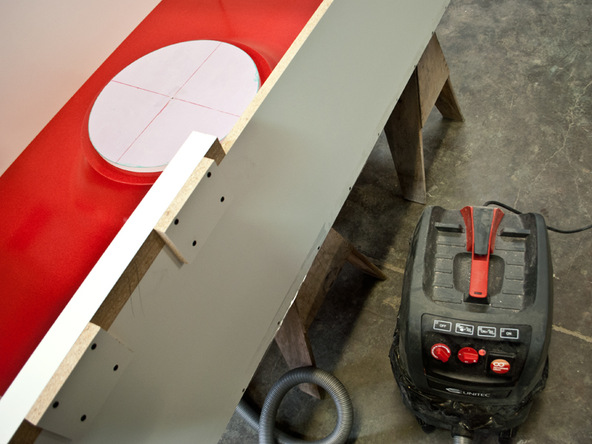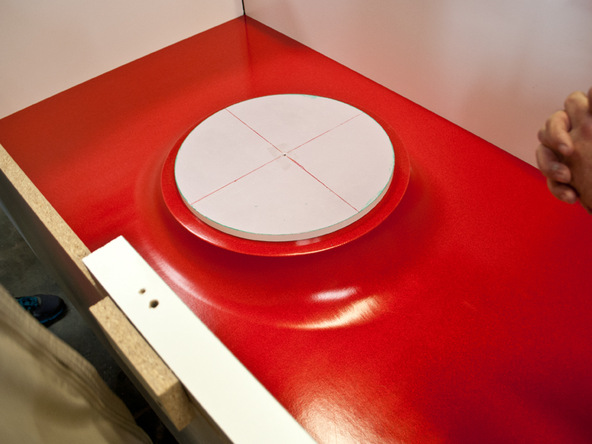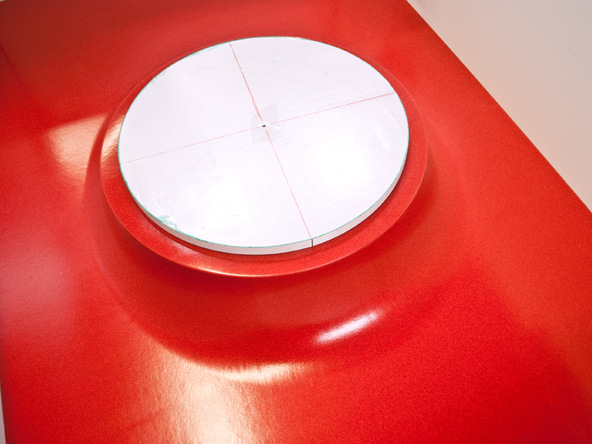Fabric Formed Concrete Fire Table
TWO: VACUUM HOOKUP
After the fabric is stretched over the central disc, it is sucked down with a shop vac, creating a smooth transition down to the burner.
What You’ll Need
- Saw Horses
- 3/4″ Drywall Screws
- Gasket Rubber
- Cordless Drill
- Duct Tape
- CS Unitec Vacuum Cleaner or Similiar
Step 1 – Air Hole
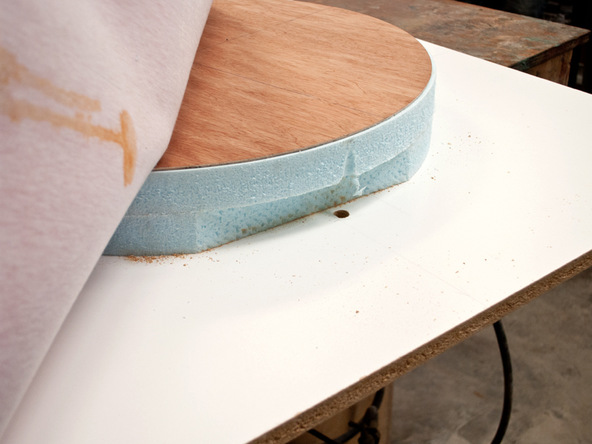
Step 2 – Vacuum Hookup
Previous: Forming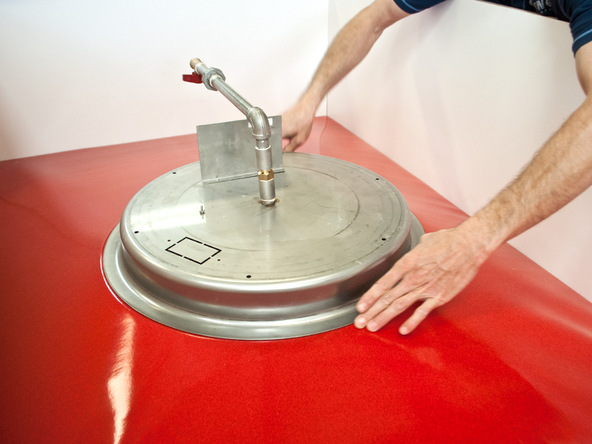

Heavy vinyl upholstery fabric is stretched taut over a foam riser and stapled to the underside of a 3/4″ melamine sheet to create the form base.
Next: Spraying and Backing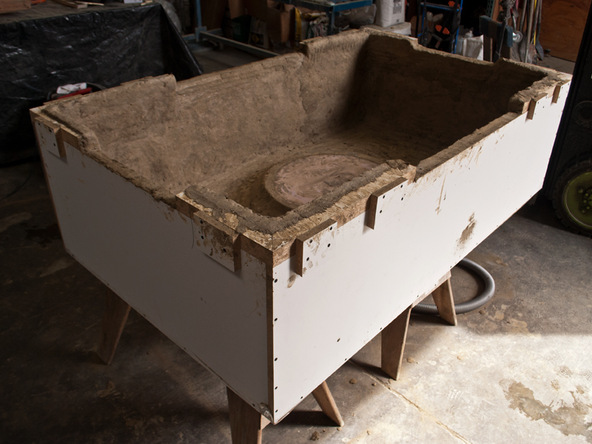

A 3/4″ layer of CHENG’s D-FRC Casting Mix is sprayed into the base of the mold while the vacuum is running before a thin coat is sprayed onto the walls.

